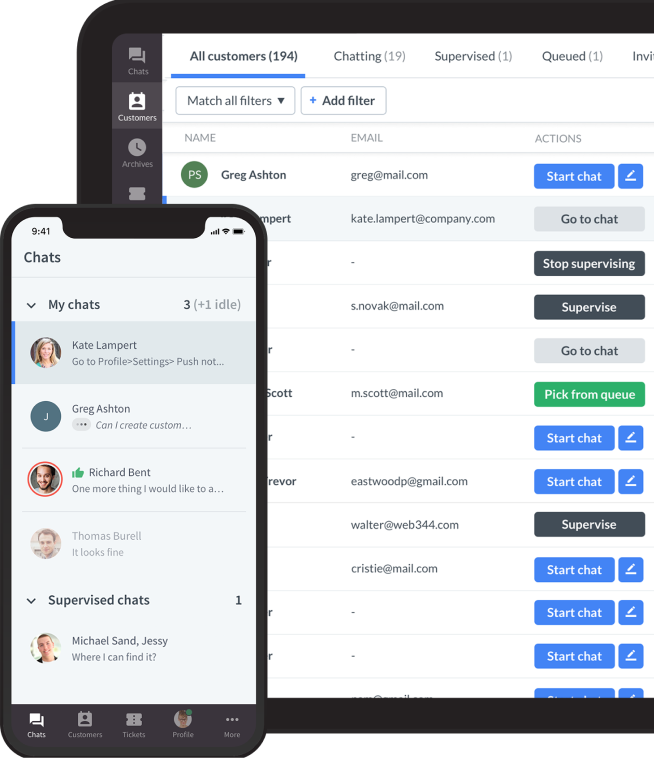
Let’s be honest, when you’re chatting with a business online, the last thing you want is to feel like you’ve been left on "read." Whether you’re trying to get help with an order or just have a quick question, waiting too long for a response can be frustrating. That’s where average response time shines in live chat interactions. It might sound like a dry metric, but it’s actually one of the key live chat metrics in customer service strategy. It helps create a smooth, satisfying customer experience in live chat support.
This article breaks down what average response time really means, why it matters more than you might think, and how businesses' customer service toolkits can help stay lightning-fast without burning out their support teams.
Whether you’re running a customer service operation or just curious about what happens behind the chat window, you’ll gain a fresh perspective on the power of quick, helpful replies.
What is the average response time in live chat interactions
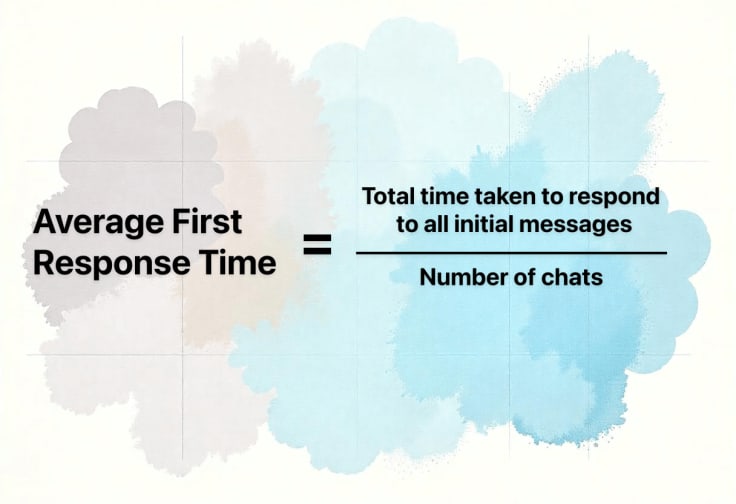
Average response time is a customer service metric that tracks how long, on average, it takes for a support agent to respond to a customer's initial message in a live chat session. It’s one of the first impressions a customer gets when they reach out for help, and it plays a major role in shaping how they feel about the support experience and building brand loyalty.
When someone starts a chat — maybe because they need help with a product, have a billing question, or just want more information — they expect a prompt reply. The average response time shows how quickly live chat agents are able to meet that expectation. It’s measured by taking the total time agents take to respond to all initial messages and dividing it by the number of chats.
This live chat metric doesn’t just reflect efficiency; it reflects the company’s attentiveness and respect for the customer’s time. A fast response signals reliability and care, while a slow one can easily lead to frustration or even lost business. That's why businesses closely monitor and work to improve their response times — it’s a small detail that can have a big impact.
Why average response time matters in live chat support
Average response time in live chat is more than just a number on a dashboard. It’s a direct reflection of how quickly and attentively a company's real-time support supports its customers. Customers aren’t just hoping for quick replies — they’re demanding them. Here's why response time matters so much:
Sets the tone for the entire interaction
The moment a customer initiates a live chat, they’re looking for help. The faster you manage to chat with support, the more confident and cared-for the customer feels. A quick reply immediately communicates that the business is attentive, organized, and ready to help, while delays can introduce doubt and frustration.
Strongly impacts customer satisfaction
Response time is one of the most visible aspects of the online customer support experience. Studies consistently show that customers rate their satisfaction significantly higher when they receive fast answers. In fact, many customers will abandon a brand after just one poor customer service experience, often tied to slow live chat service.
Influences on perceived professionalism and trust
Even if the issue takes time to solve, a fast initial live chat response builds trust and satisfied customers. It shows that someone is present, acknowledges the concern, and is actively working on a solution. On the other hand, a slow response to customer inquiries can make your team seem understaffed, disorganized, or indifferent.
Affects conversion and retention rates
For ecommerce and SaaS companies, fast responses during a sales or onboarding live chat conversation can mean the difference between a conversion and a lost lead. Customers who get answers quickly are more likely to complete purchases, upgrade plans, or stick with your service long-term.
Connects to team efficiency and scalability
Monitoring average response time also helps managers identify inefficiencies or workload imbalances on the support team. High response times may signal the need for better tools, more automation, or improved scheduling. It’s not just about being fast—it’s about being sustainably fast as your customer base grows.
What are the industry benchmarks for response time
Industry benchmarks for average response time in live chat have evolved to meet rising customer expectations for swift support. In 2024, leading companies aimed for a first response time under 30 seconds, with top performers achieving responses in as little as 10 seconds when no queue was present.
These benchmarks are not uniform across all sectors. For instance, the average first response time across industries was approximately 37 seconds. However, in industries like ecommerce and SaaS, where immediacy is crucial, companies often strive for even faster response times to enhance customer satisfaction.
Several factors influence these benchmarks, including team size, chat volume, and the use of automation tools. Implementing features like canned responses and proactive greetings can help reduce response times and meet industry standards.
Maintaining a swift live chat response time is essential, as delays can lead to customer frustration and potential loss of business. By aligning with industry benchmarks and continuously optimizing support strategies, companies can ensure they meet customer expectations and maintain a competitive edge.
What impacts response time
These factors highlight why live chat response time isn't just about how fast someone types — it’s a combination of staffing, technology, training, and process design. Improving even one of these areas can have a meaningful impact on customer wait times and overall satisfaction.
Agent availability and workload

One of the most direct influences on live chat response time is the number of agents online and the number of chats each is handling at once. If agents are spread too thin, handling multiple chats simultaneously or covering for absent teammates, response times inevitably increase. Staffing appropriately based on peak hours and chat volume forecasts is crucial for maintaining fast responses.
Chat routing and queue management
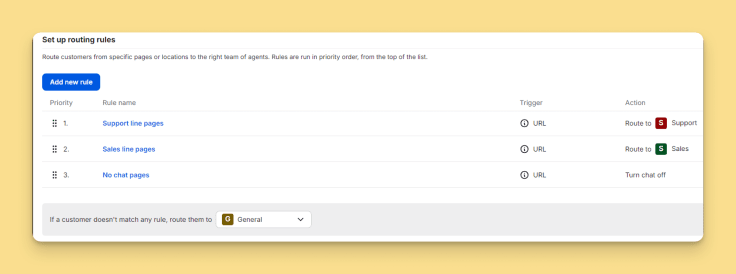
The way incoming chats are routed plays a huge role in speed. Systems that use round-robin, skill-based, or availability-based routing can affect how quickly a customer reaches an available and qualified agent. If routing rules are poorly configured or agents are mismatched with queries, live chat responses can be delayed even if agents are technically available.
Use of automation and bots
Automation can be both a help and a hindrance. On the plus side, chatbots can offer instant responses to common questions, gather initial customer details, and even solve basic problems, effectively reducing the average wait time for a human response. However, if bots are too rigid or overused, customers might feel stuck and experience delays before they reach a live chat support agent.
Time of day and seasonal spikes

Live chat demand often fluctuates based on time zones, business hours, and seasonal trends (like holiday shopping spikes). If teams aren’t prepared for these surges, response times can climb quickly, damaging customer satisfaction. Organizations that fail to adjust staffing or scheduling to match these trends may find their average times slipping.
Agent training and tools
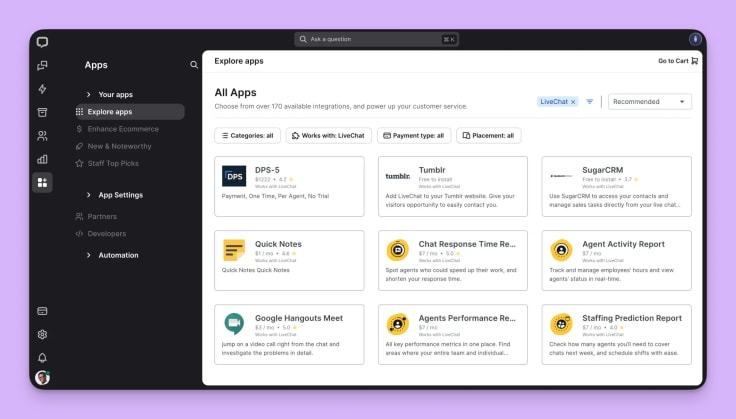
How well-trained live chat support agents are — and how easily they can navigate their tools — affects how fast they respond. Experienced agents with access to shortcuts, canned messages, CRM integrations, internal knowledge bases, and other customer service channels can handle chats much more efficiently. Conversely, undertrained live chat service staff or outdated tools slow things down.
Internal processes and escalations
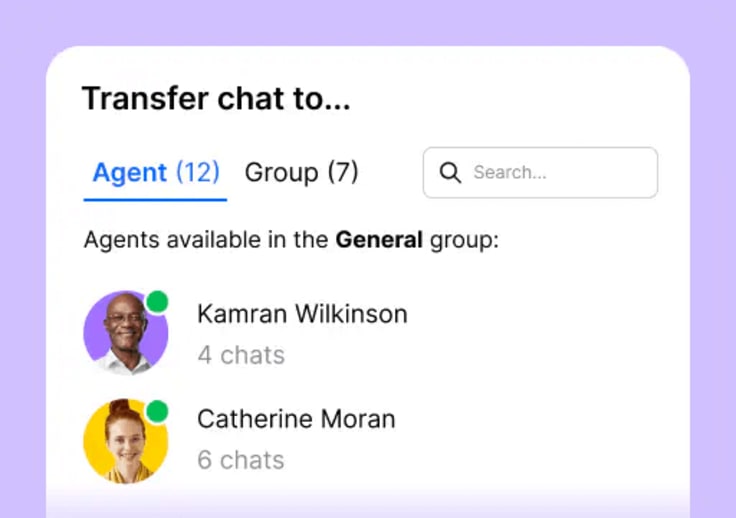
Sometimes, live chat agents need to escalate a chat to another team or investigate backend systems to resolve an issue. If internal processes are clunky or there’s poor communication between departments, the time it takes to respond increases. Streamlining these workflows can significantly reduce response delays.
Customer behavior and complexity of inquiry
Not all chats are created equal. Some customers write long, detailed messages or multiple questions in a row, which take longer to review and answer. Similarly, complex or technical issues naturally require more time to research and respond to than simple queries like "Where is my order?"
Ways to improve average response time
When done well, improving response time doesn’t just make live chat support more efficient — it reevaluates customer service strategy, strengthens trust, builds brand loyalty, and enhances the overall customer experience.
Implement AI and chatbot technologies
Using automation effectively can dramatically cut down live chat conversation response times. Deploying chatbots to handle common questions (like order tracking, account info, or FAQs) gives customers immediate answers while freeing up human agents to focus on more complex customer needs. Smart bots can also collect customer information upfront, so agents are prepared before joining the chat, eliminating unnecessary back-and-forth.
Use pre-written responses and knowledge bases
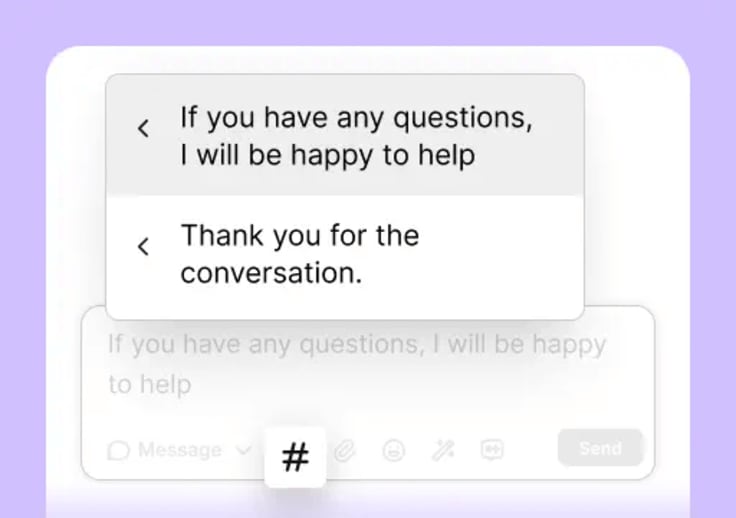
Canned responses and internal knowledge bases allow agents to answer frequently asked questions quickly and consistently. When set up properly, these tools reduce typing time and help maintain accuracy. They’re especially helpful for onboarding new agents, ensuring they don’t need to memorize every detail while still being able to respond promptly.
Check canned responses examples to improve your support agents' workflows!
Monitor and adjust staffing based on demand

Live chat traffic often follows predictable patterns, such as spikes during product launches, holidays, or business hours. Using data to forecast busy periods allows managers to schedule agents accordingly, minimizing queues and delays. Some companies also employ a “follow-the-sun” model, distributing support teams across time zones to maintain round-the-clock coverage.
Set and communicate clear expectations

If there’s going to be a wait, let customers know. Displaying estimated wait times or queue positions keeps users informed and reduces frustration. Some companies also use proactive messaging — like a greeting that appears when someone lands on the site — to let users know they’re available and ready to help, or to ask for initial information before the conversation begins.
Train agents to handle chats efficiently

Agent performance has a direct impact on response times. Training should focus not only on product knowledge but also on multitasking, live chat etiquette, tone, and live chat software use. Encourage agents to manage multiple chats only if they can maintain quality. Live chat coaching, role-playing scenarios, and real-time feedback can sharpen these skills over time.
Read our Agent's Handbook to better your live chat skills!
Optimize your tech stack

A clunky or outdated chat platform can slow agents down. Integrating your chat software with your CRM, helpdesk, or order management system allows agents to pull up relevant data in real time — no more jumping between tabs or copying and pasting information. Features like keyboard shortcuts, sentiment analysis, and AI-suggested replies can also reduce response delays.
Regularly track and improve live chat metrics
You can’t improve what you don’t measure. Regularly reviewing live chat metrics — broken down by team, chat hour, or chat type — can highlight where delays in chat sessions are occurring. Set realistic benchmarks and share them with your team. Encourage a culture of continuous improvement by celebrating wins and identifying training or process gaps.
Check which customer success metrics to track to improve customer satisfaction!
5 live chat software that helps minimize average response time
Improving response time in live chat isn’t just about working faster; it’s about working smarter. The right tools can empower customer support teams to deliver quick, accurate, and human responses to incoming chat requests even during high-volume periods. Below are some of the top platforms and technologies that help streamline live chat sessions and reduce wait times.
| Tool | Best for | Key features | Notable integrations |
|---|---|---|---|
| LiveChat | Teams prioritizing speed and agent tools | Canned responses, real-time typing view, AI bots, and advanced analytics | HubSpot, Salesforce, Shopify, WordPress |
| Intercom | SaaS and B2B with a focus on automation | Custom bots, inbox workflows, macros, Help Center integration | Slack, Salesforce, Stripe |
| Zendesk Chat | Existing Zendesk users needing live chat | Triggers, automated greetings, visitor tracking, and integrated ticketing | Zendesk Suite, Shopify, Salesforce |
| Drift | Sales and marketing-driven conversations | Chatbots, lead routing, real-time alerts, sales playbooks | Marketo, Salesforce, Google Calendar |
| Tidio | SMBs looking for simplicity and multichannel | No-code AI bot builder, multichannel inbox, visitor tracking, performance insights | WordPress, Shopify, Messenger, Instagram DM |
LiveChat
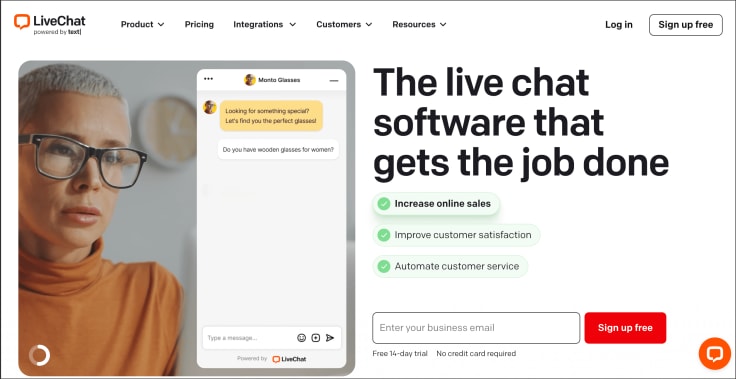
LiveChat is one of the most robust and widely used platforms for customer service teams. It offers a suite of features designed to boost response speed, agent productivity, and build customer loyalty, such as:
- Canned responses for instant replies to frequently asked questions.
- Real-time typing view, letting agents see what customers are typing before they hit send.
- Chat routing and queue management to direct chats to the right agent automatically.
- AI-powered chatbot integration for handling common queries and collecting customer data up front across multiple customer service channels.
- Analytics and AI-powered insights dashboards that track average response time, first contact resolution, and customer satisfaction, making it easy to monitor and optimize performance.
- Built-in AI-powered assistant and AI-suggested tags, responses, and knowledge sources providing real-time help during chat sessions to customer service teams.
Its clean interface, mobile compatibility, and seamless integrations with tools like HubSpot, Salesforce, and Shopify make it a strong choice for businesses that want to reduce response times and overall chat duration while maintaining quality.
Intercom
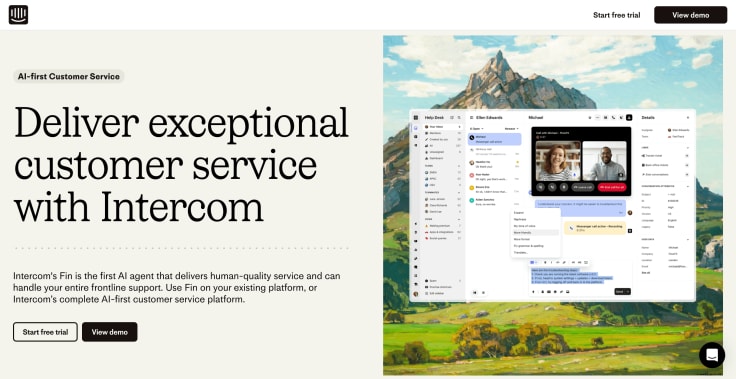
Intercom is a live chat tool that combines live chat, automation, and customer messaging into one powerful platform. Its standout features include:
- Custom bots that can qualify leads or resolve low-complexity issues without the help of customer service representatives.
- Inbox workflows to prioritize and route customer inquiries.
- Conversation macros for pre-written live chat replies.
- A Help Center integration that can suggest articles automatically before a live chat agent even joins the chat session.
Intercom is particularly strong in the SaaS and B2B space, where scalability and personalization are essential to foster customer loyalty.
Zendesk Chat
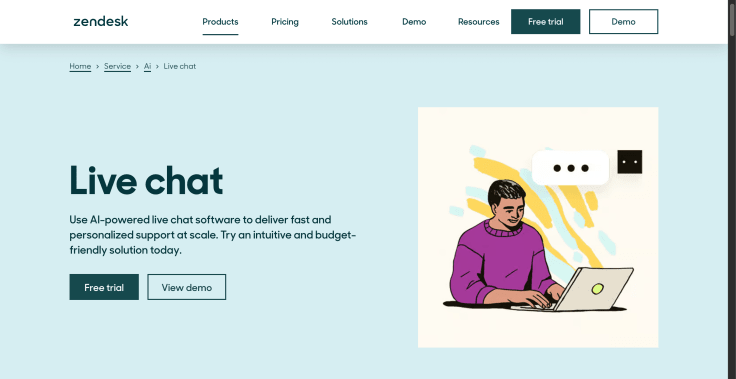
Zendesk Chat integrates tightly with the broader Zendesk suite, making it an excellent customer service option for teams already using Zendesk for ticketing and customer support. Features include:
- Triggers to initiate customer interactions based on customer behavior.
- Automated greetings and response flows to common customer queries.
- Website visitor tracking helps agents tailor live chat conversations based on past chat history.
- Integrated ticketing to escalate chats when needed to increase customer satisfaction.
Zendesk's streamlined experience is ideal for companies that want to align chat support with other customer service channels.
Drift
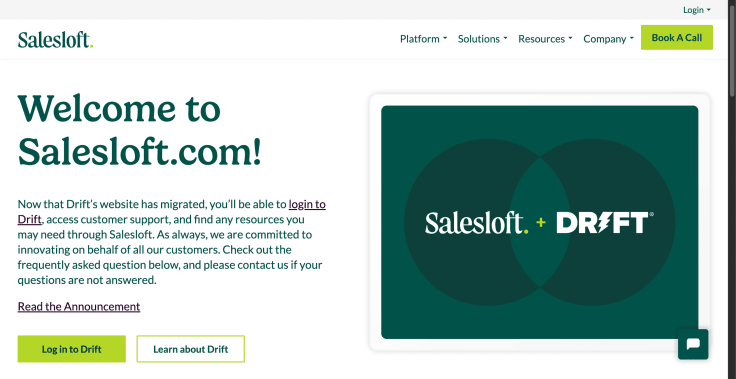
Live chat tool originally focused on sales conversations, Drift has expanded into customer support with its chat-first approach. Drift offers:
- Chatbots for lead qualification and support triage, minimizing chat duration.
- Real-time alerts and routing chat messages for high-priority messages from loyal customers.
- Integration with sales and marketing tools, including CRMs and calendar scheduling.
- Playbooks with personalized customer preferences, automated chat requests.
It’s best suited for businesses that want to blur the line between marketing, sales, and support—all in one platform.
Tidio
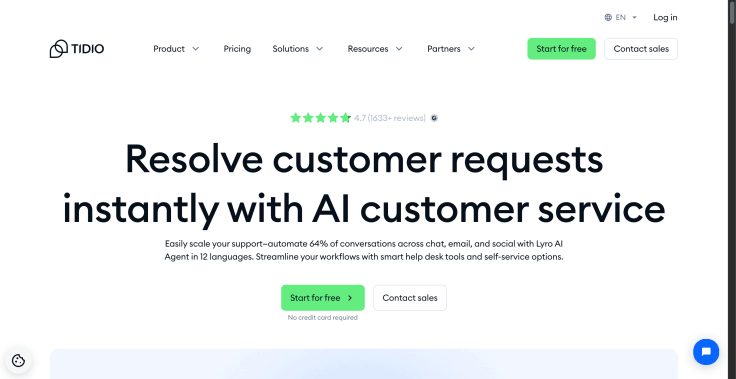
Tidio is a lightweight, user-friendly live chat platform designed for small to medium-sized businesses. It provides:
- AI chatbot builder with no-code setup to start the chat session by gathering the necessary data.
- Multichannel inbox, supporting email, Messenger, and Instagram DMs alongside live chat.
- Live website visitor tracking to proactively initiate customer interactions.
- Performance insights to track response times, chat duration, and customer satisfaction.
It’s a great entry-level live chat tool with impressive automation features for its price point.
Measuring and tracking progress in response time with LiveChat
Effectively managing live chat performance means more than just aiming for fast replies. It requires consistent, data-driven monitoring. By actively measuring and tracking average response time, live chat support teams can identify trends, uncover bottlenecks, and fine-tune workflows to improve speed, quality, and customer experience. Here's how you can do it — and why LiveChat stands out as one of the best tools for the job.
Why live chat usage measurement matters
Tracking your team’s average response time isn’t just a vanity exercise. It has real implications for customer experience, agent productivity, and business outcomes. Measuring this metric helps you:
- Spot performance issues early, such as rising wait times during peak hours.
- Benchmark your support against industry standards and internal goals.
- Tie customer satisfaction (CSAT) to speed, revealing how response delays impact customer happiness.
- Support training and coaching efforts, with concrete data to guide agent improvement.
- Make smart resourcing decisions, like when to scale up staffing or invest in automation.
What to measure
To get a full picture of your live chat performance, it’s best to track average response time alongside other related metrics:
- First response time (FRT) - time to the first agent reply
- Average handle time (AHT) - total time spent on a chat from start to finish
- Resolution time - the time taken to fully solve the customer’s issue
- Queue wait time - the time customers spend waiting before their chat is picked up
- Customer satisfaction (CSAT) - feedback scores are often influenced by response speed.
Together, these metrics help paint a holistic view of your team’s efficiency and responsiveness.
See more about first response time and average handling time tips to improve your agent performance.
Why LiveChat is the best tool for tracking live chat metrics
Among the many platforms available, LiveChat offers some of the most advanced and user-friendly tools for measuring and optimizing live chat performance. Here’s what makes it a standout:
✔️ Real-time dashboards: Instantly see key metrics like average response time, number of chats, wait times, and satisfaction scores.
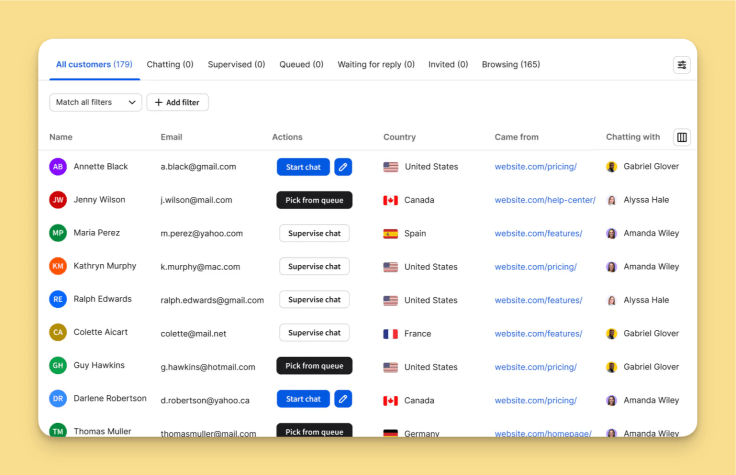
✔️ Detailed agent reports: Evaluate individual and team performance, highlighting top performers and areas for improvement.

✔️ Historical analytics: Track trends over time, compare results week over week or month over month, and evaluate the impact of workflow changes.
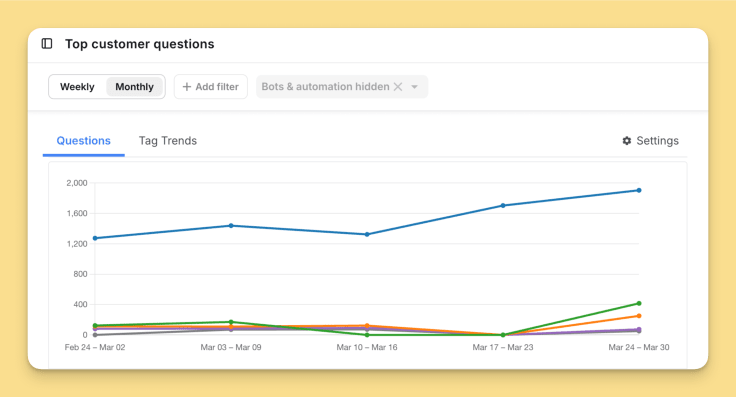
✔️ Custom reports: Tailor data views to focus on specific channels, time periods, or customer segments.
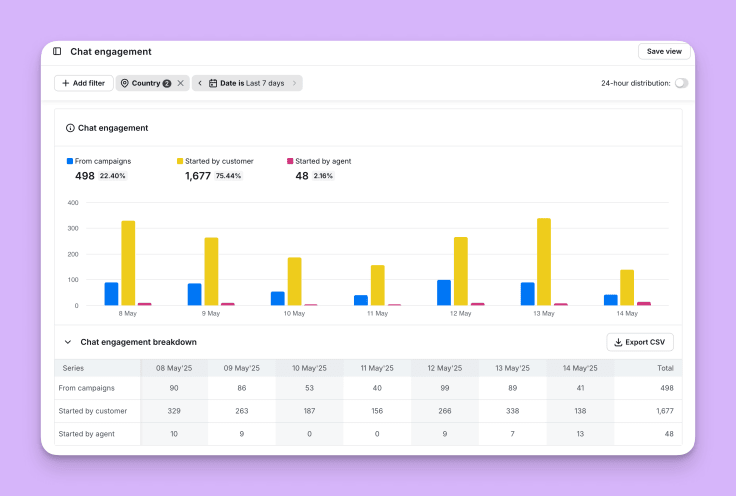
✔️Chat tags and filters: You can break down data by issue type, product line, or department to analyze where slowdowns are occurring.
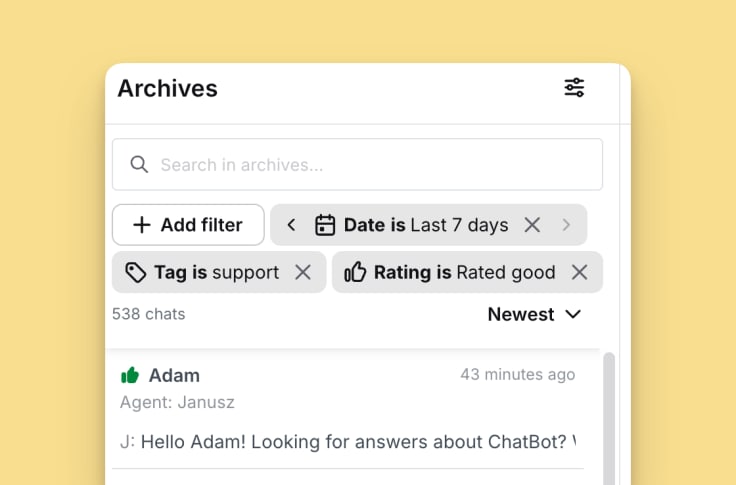
Best practices for ongoing improvement
To get the most from your measurement efforts:
- Set realistic, team-specific benchmarks based on chat volume and complexity.
- Review performance data weekly or monthly, not just quarterly.
- Involve your live chat agents by sharing dashboard visibility and setting shared goals.
- A/B test changes, such as new routing rules or chatbot scripts, and measure their direct impact on chat message response time.
- Pair metrics with context, such as feedback from customers and agents, to understand the story behind the numbers.
Measuring and tracking average response time is essential to delivering a responsive, scalable, and satisfying live chat experience. With tools like LiveChat, you gain visibility into your current performance and the insights needed to improve continuously.
Common mistakes to avoid when managing live chat response time
See more on what to avoid during live chat support conversations to better customer satisfaction.
Companies often make well-intentioned decisions in the pursuit of speed that backfire in the form of frustrated customers, burned-out agents, or inconsistent service. Below are some of the most common mistakes to avoid when managing live chat response times:
Prioritizing speed over quality
Fast live chat responses are important, but not at the cost of helpful, accurate replies. Some companies pressure agents to respond as quickly as possible, leading to rushed answers, incomplete solutions, or even wrong information.
This not only frustrates customers but often results in follow-up messages that actually increase total chat volume and handle time. The key is balance: quick responses that are still thoughtful and solution-oriented.
Overloading agents with simultaneous chats
Live chat software often allows agents to handle multiple conversations at once. While this can boost efficiency, it also risks overwhelming agents if not managed carefully. When agents juggle too many chats, response times may seem fast at first but slow down dramatically as conversations progress.
This can lead to longer resolution times, decreased CSAT, and agent burnout. Use data to determine the optimal chat concurrency per agent and adjust as needed.
Relying too heavily on chatbots without human backup
Automation is powerful, but it’s not a silver bullet. Some companies lean too heavily on chatbots to cut response times, only to frustrate customers who can’t get the help they need.
Bots are best used to handle simple, repetitive queries or collect basic information, not to replace human judgment in complex or emotional situations. Always provide a clear path to a live agent when needed, and monitor where bots succeed vs where they fall short.
Ignoring queue management and routing logic
Slow response times often stem from poor routing rules or unmanaged queues. If chats are sent to the wrong agents or if incoming conversations aren’t prioritized correctly, customers can wait far longer than necessary, even when agents are available. Effective routing based on agent skills, language, or topic helps ensure chats are handled efficiently from the start.
Check out tips for effective queue management!
Neglecting performance reviews and feedback
Another common mistake is failing to regularly review response time data or ignoring feedback from both customers and agents. Without this insight, teams can’t spot trends, identify blockers, or continuously improve. What worked last quarter might not be effective today if chat volume or team structure has changed. Ongoing analysis and regular feedback loops are essential for long-term success.
Not setting clear expectations with customers
When customers don’t know how long they’ll be waiting, even short delays can feel longer and more frustrating. Failing to display estimated wait times, queue positions, or proactive updates leaves customers in the dark.
This lack of transparency often leads to chat abandonment or duplicate messages, which can spike workload and lower satisfaction. Setting realistic expectations goes a long way toward maintaining trust and creating loyal customers.
Using outdated or poorly integrated tools
A slow or clunky live chat platform can derail even the best support team. When agents have to switch between tabs, manually enter data, or wait for screens to load, response times inevitably suffer. Poor integration with CRMs, ticketing systems, or knowledge bases also leads to delays. Investing in a modern, integrated solution like LiveChat ensures agents can work smoothly and respond quickly with the context they need.
Final thoughts
Customers expect fast, helpful live chat responses, and when those expectations are met, it builds trust, satisfaction, and loyalty. On the flip side, even minor delays can result in frustration, abandoned conversations, and a poor customer experience. That’s why monitoring and improving your average response time isn’t just a nice-to-have — it’s a competitive necessity.
But speed alone isn’t the full story. Striking the right balance between responsiveness and quality sets exceptional support teams apart. This requires not only a customer-first mindset but also the right tools to support it.
Among the many options available, LiveChat stands out as the best all-around platform for businesses aiming to elevate their live chat performance. With powerful real-time analytics, intelligent routing, chatbot integrations, and detailed agent insights, LiveChat helps teams reduce response time without sacrificing service quality, delivering what customers expect.
Whether you’re just starting to build out your live chat strategy or looking to elevate your customer queries support, remember: faster replies lead to stronger relationships. And with the right systems in place, every conversation becomes an opportunity to impressively meet customers' needs.
